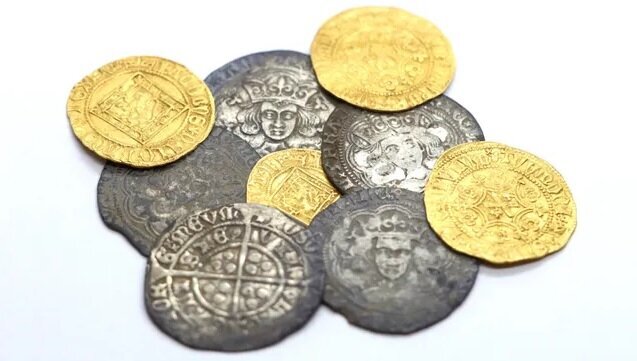Police recover 21 Ilkhanid-era coins in northern Iran

TEHRAN — Iranian police have recovered 21 ancient coins believed to date back to the Ilkhanid era during a vehicle search near the city of Faruj in North Khorasan province, northeastern Iran.
According to a statement from the provincial police department, the discovery was made after officers received public reports and conducted intelligence-led operations. Acting on the information and under judicial authorization, officers from the Faruj police station stopped and searched a suspect’s vehicle.
“During the inspection, 21 copper-colored ancient coins were found inside the vehicle,” said Major Hojjatollah Ataei, the police chief of Faruj. “The case was immediately referred to the provincial cultural heritage department for expert analysis.”
Experts from the local department of cultural heritage confirmed the coins’ authenticity and identified them as belonging to the Ilkhanid dynasty, which ruled Iran from 1256 to 1335 under Mongol leadership.
The seized artifacts have been handed over to cultural authorities for further examination and preservation. One suspect has been arrested in connection with the case and referred to judicial authorities for legal proceedings.
The Ilkhanid dynasty played a significant role in Iran’s medieval history. It was Mongol dynasty that ruled Iran from 1256 to 1335. Il-Khan is Persian for “subordinate khan.”
Hulegu, a grandson of Genghis Khan, received orders from the supreme Mongol chieftain Mongke to conquer Iran. Hulegu set out around 1253 with a Mongol army of about 130,000 men. He founded the Il-Khanid dynasty in 1256 and conquered Baghdad and all of Iran by 1258, according to Britannica.
The Il-Khanids consolidated their position in Iran and unified the region as a political and territorial entity after several centuries of fragmented rule by small dynasties. During the reign of the Il-Khanid Maumud Ghuzun (r. 1295-1304), the Il-Khanids lost all contact with the remaining Mongol chiefs in China. Mahmud Ghuzun himself embraced Sunni Islam, and his reign was a time of Iranian cultural renaissance in Iran, with scholars such as Rashid al-Din flourishing under his patronage.
Ghazan’s brother Oljeitu (r. 1304-16) converted to Shia Islam in 1310. Oljeitu’s conversion caused great unrest, and when he died in 1316, the civil war was imminent. His son and successor, Abu Sa’id (r. 1317-35), converted to Sunni Islam and was thus able to prevent a war.
During Abu Sa’id’s reign, however, factional disputes and internal unrest continued to spread. Abu Sa’id died without leaving an heir, and with his death, the unity of the dynasty was broken. Thereafter, various Il-Khanid princes ruled parts of the dynasty’s former territory until 1353.
AM
Leave a Comment